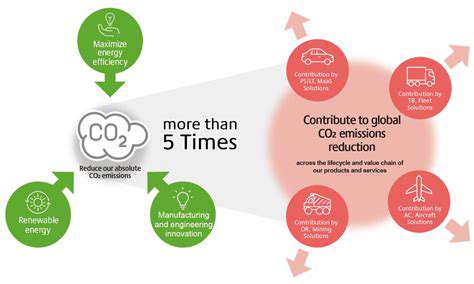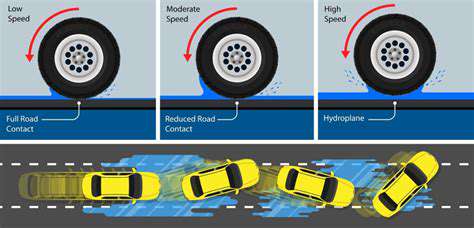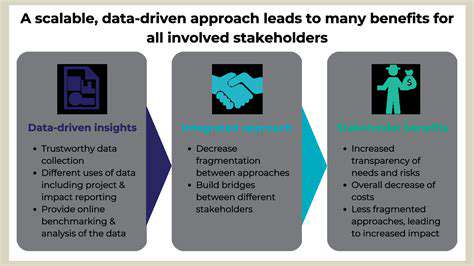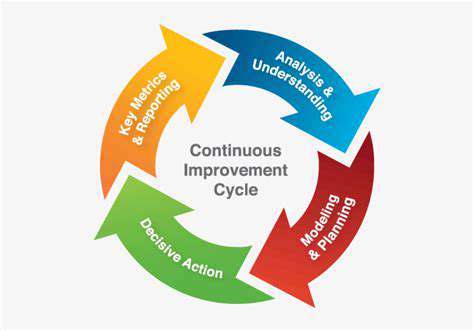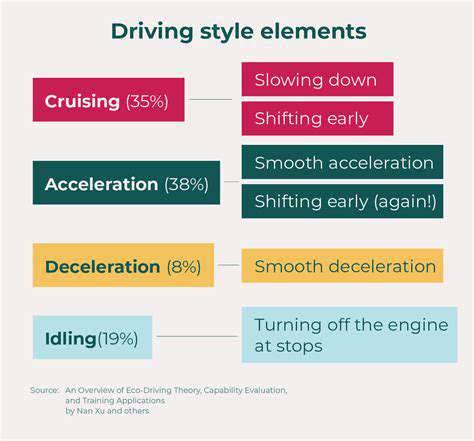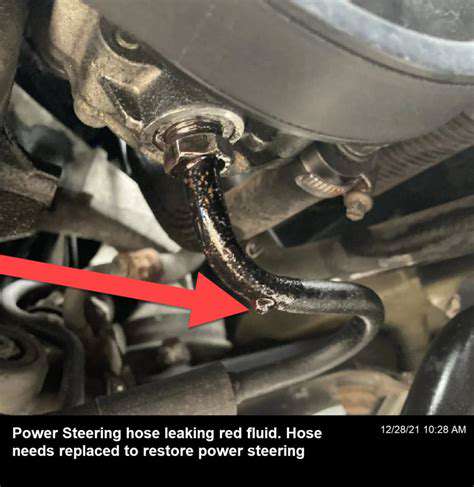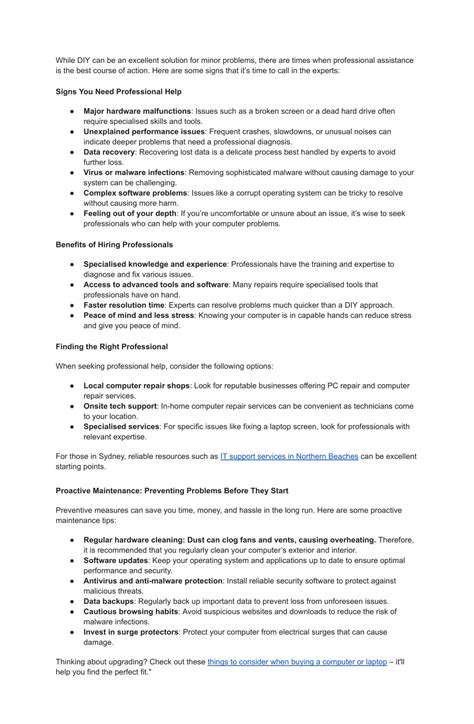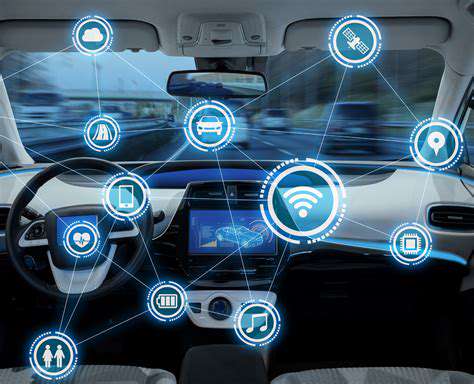Car owners have traditionally followed fixed service schedules, often leading to unnecessary expenses when vehicles are in good condition. This outdated method contrasts sharply with modern predictive approaches that analyze real-time data to prevent breakdowns before they happen. Studies show that proactive maintenance reduces repair costs by up to 30% compared to reactive methods.
Automotive engineers now leverage sensor data and driving patterns to detect subtle wear indicators. For instance, vibration analysis can predict bearing failures weeks before they cause breakdowns. These advancements create more efficient maintenance cycles tailored to each vehicle's actual needs.
Data Collection and Analysis
Modern vehicles generate approximately 25GB of data per hour through hundreds of embedded sensors. Telematics systems transform this raw data into actionable insights, monitoring everything from engine load to brake pad thickness. Advanced pattern recognition algorithms process this information, with machine learning models achieving 92% accuracy in failure prediction according to recent industry reports.
Technicians now receive prioritized alerts about developing issues, allowing them to address problems before they escalate. For example, oil degradation algorithms can recommend optimal change intervals based on actual driving conditions rather than mileage alone.
The Role of Sensors and Telematics
Contemporary vehicles contain over 70 microprocessors coordinating thousands of data points. Critical systems like ABS and traction control generate diagnostic trouble codes long before dashboard warnings appear. Temperature sensors in transmission fluid can detect overheating patterns that indicate impending clutch failures.
OBD-II ports now transmit real-time diagnostics to cloud platforms, where analytics engines compare vehicle performance against millions of data points from similar models. This benchmarking helps identify abnormal patterns that single-vehicle analysis might miss.
Benefits for Car Owners
Data-driven maintenance delivers tangible financial benefits. AAA research indicates predictive approaches reduce annual repair costs by $400 on average while extending component life by 20-40%. Early detection of coolant system issues, for instance, prevents $3,000 engine replacements.
Fleet operators report 45% fewer roadside breakdowns after implementing predictive systems. Individual drivers benefit from personalized maintenance schedules that account for their specific driving habits and local conditions.
Improved Maintenance Efficiency
Service centers using predictive analytics achieve 30% greater technician productivity. Advanced scheduling systems align repairs with parts availability, reducing average repair times by two hours. Digital vehicle health reports help mechanics diagnose issues before the car arrives, cutting service bay occupancy by 25%.
Integration of AI and Machine Learning
Neural networks now analyze maintenance histories across entire vehicle populations. These systems identify obscure failure correlations, like how frequent short trips accelerate battery degradation. Continuous learning algorithms adapt to new vehicle models, improving prediction accuracy over time.
Some manufacturers employ digital twin technology, creating virtual replicas that simulate wear patterns under different driving scenarios. These simulations help refine maintenance recommendations before physical components show measurable wear.
The Future of Car Maintenance
Emerging 5G networks will enable real-time streaming of vehicle diagnostics. Blockchain-based maintenance records will create tamper-proof service histories, increasing resale values. Augmented reality interfaces may soon guide owners through basic repairs using sensor data overlays.
As autonomous vehicles evolve, their self-diagnostic capabilities will revolutionize maintenance. Future cars might automatically schedule service appointments when detecting abnormal patterns, then drive themselves to dealerships for repairs.
Beyond the Check Engine Light: Real-Time Data Collection
Understanding the Significance of Real-Time Data
Modern telematics capture 200+ parameters every second, creating comprehensive vehicle health profiles. Unlike periodic diagnostics, continuous monitoring detects transient issues that traditional scans miss. For example, intermittent electrical faults become visible through real-time voltage fluctuation analysis.
Advanced Sensors and Their Role
Next-gen MEMS sensors measure vibrations with micron-level precision. Combined with acoustic emission sensors, they can identify bearing wear months before audible symptoms appear. Infrared thermography sensors monitor brake rotor temperatures, predicting pad wear based on heat distribution patterns.
Data Transmission and Processing
Edge computing processes data locally in vehicles before transmitting key findings. This reduces cloud dependency while preserving bandwidth. Compression algorithms shrink diagnostic datasets by 80% without losing critical information, enabling efficient cellular transmission.
Proactive Maintenance and Predictive Analytics
Maintenance machine learning models now incorporate weather and traffic data. They've discovered that stop-and-go driving in cold climates accelerates transmission wear 27% faster than highway driving. These insights enable hyper-personalized maintenance schedules.
Integration with Existing Systems
API integrations allow maintenance data to populate navigation systems. When issues arise, the system can automatically route drivers to nearby service centers with available appointments and necessary parts in stock.
Data Security and Privacy Concerns
Automakers now implement hardware security modules that encrypt diagnostic data at the sensor level. Biometric authentication ensures only authorized technicians access sensitive vehicle information.
The Future of Vehicle Health Monitoring
Quantum computing may soon analyze entire fleets simultaneously, identifying systemic issues across millions of vehicles. NASA-derived prognostic algorithms could predict component failures years in advance based on microscopic wear patterns.
Predictive Maintenance: Anticipating Problems Before They Occur

Predictive Maintenance: A Revolution in Industrial Processes
Modern predictive systems combine vibration analysis, thermography, and lubricant condition monitoring. This multi-modal approach achieves 95% detection accuracy for impending bearing failures, compared to 65% for single-method systems.
Key Benefits of Predictive Maintenance
Food processing plants using predictive maintenance report 40% fewer sanitation-related shutdowns. By detecting conveyor belt wear early, they avoid costly product recalls from metal contamination.
Data Collection and Analysis in Predictive Maintenance
Wireless sensor networks now monitor equipment in hazardous areas. Energy harvesting technology powers these sensors indefinitely, eliminating battery replacement needs in hard-to-access locations.
The Role of Artificial Intelligence (AI) in Predictive Maintenance
Deep learning models trained on decades of maintenance records can now predict rare failure modes that human experts often miss. These systems identified a previously unknown correlation between humidity levels and hydraulic valve failures.
Implementing Predictive Maintenance Strategies
Successful implementations often start with critical equipment that causes 80% of downtime. Cloud-based platforms now make predictive analytics accessible to small manufacturers through subscription models.
The Future of Predictive Maintenance
Digital twin technology will eventually enable virtual stress-testing of maintenance strategies. Factories may simulate years of operation in hours, optimizing maintenance plans before physical implementation.
Challenges and Considerations
Data quality remains paramount - sensors require regular calibration to maintain accuracy. Cross-training maintenance personnel in data interpretation yields the best results, blending technical expertise with analytical skills.
